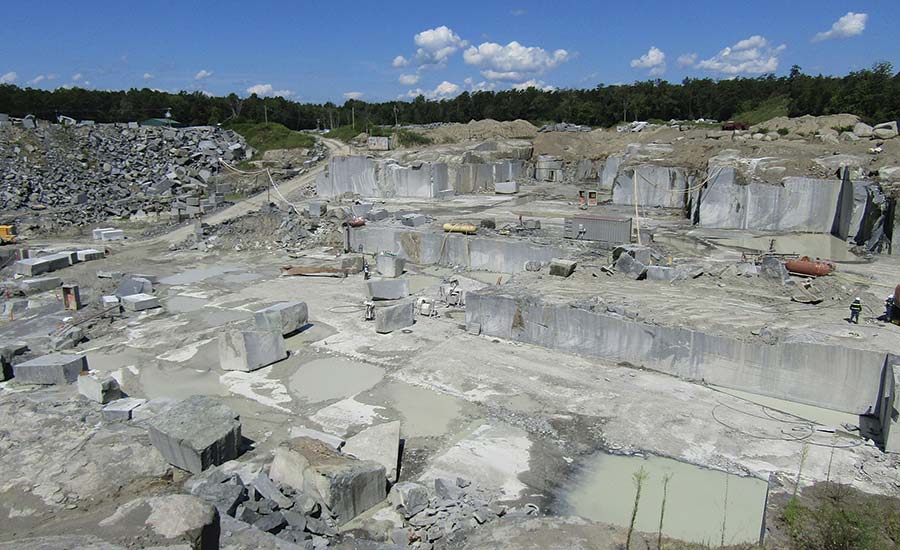Revealing the Mysteries of Granite Quarrying: Where Stamina and Elegance Meet
The globe of granite quarrying is a realm where the raw stamina of nature converges with human virtuosity to produce frameworks that stand the test of time with an air of sophistication. From the midsts of quarries to the meticulous polishing in workshops, the process of transforming granite into building marvels is an intricate dance of practice and advancement. As we peer right into the depths of this old craft, we start to discover the concealed details that form the very significance of our developed setting.
The Origins of Granite Quarrying
In the record of architectural background, the beginnings of granite quarrying are shrouded in a tapestry of old craftsmanship and geological wonders. Going back to old Egypt and Mesopotamia, the extraction of granite from quarries marked the beginning of a journey that would at some point result in the development of several of the globe's most legendary structures.
Granite quarrying's origins can be mapped to the experienced artisans who acknowledged the stone's toughness and visual charm. With a mix of primitive tools and sheer determination, these very early quarry workers uncovered granite blocks that would certainly come to be the structure blocks of worlds.
As civilizations progressed, so did the techniques of quarrying granite. The Romans, renowned for their design prowess, created innovative methods for removing granite to create monuments, temples, and roadways that stood the test of time.
The tradition of these old quarrying practices remains to shape modern-day design, with granite remaining a sign of toughness and elegance in construction projects around the globe. (granite quarries in south africa)
Tools of the Quarrying Profession
The evolution of granite quarrying techniques from ancient civilizations to modern times highlights the crucial duty played by the devices of the quarrying sell shaping the industry's techniques. In old times, quarrying tools were primary, commonly including blades, hammers, and wedges made from materials like bronze or iron. These devices required significant manpower and time to remove granite blocks from quarries.

In addition, the intro of pneumatic tools and high-powered equipment has actually dramatically decreased the physical labor required in quarrying procedures, improving employee safety and efficiency. As the quarrying market remains to introduce, the devices of the profession remain at the forefront of driving progress and shaping the future of granite removal.
Extracting Blocks of Granite
Using precision machinery and advanced techniques, the extraction of granite blocks from quarries has become an innovative process in the modern quarrying market. The preliminary action includes identifying the area and dimension of the granite deposit to establish the most reliable removal technique. Once a suitable website is chosen, the extraction procedure starts with the exploration of holes for the placement of explosives. Controlled blasting techniques are after that used to disintegrate the granite into convenient sections.

Sprucing Up and Completing Strategies
To achieve a remarkable surface on granite blocks, experienced craftsmens employ a series of precise sprucing up and ending up strategies. After the initial extraction and forming procedures, the granite obstructs go through an extensive polishing stage to boost their all-natural elegance and toughness. One common approach utilized in polishing granite is ruby abrasion, where industrial rubies are made use of to grind and brighten the stone to a smooth coating. This procedure not only creates a shiny surface however also guarantees harmony in color and texture across the granite block.
In addition to sprucing up, finishing strategies are applied to further fine-tune the granite's look. These strategies might include flaming, refining, or brushing, each offering distinct appearances and coatings to match various visual choices. Flaming, for circumstances, involves subjecting the granite surface area to high temperatures to produce a harsh, distinctive surface, suitable for exterior applications where slip-resistance is necessary. Sharpening, on the various other hand, gives a matte coating that is smooth to the touch, best for interior kitchen counters and floor covering. By thoroughly selecting and applying these polishing and finishing strategies, craftsmens can change raw granite obstructs right into charming items that showcase both stamina and beauty.

Environmental Impact and Sustainability
With the expanding emphasis on environmental consciousness in the sector, granite quarrying techniques are index increasingly scrutinized for their impact on natural resources and long-term sustainability. Furthermore, the transport of granite from quarries to refining facilities generates carbon exhausts, better contributing to ecological degradation.
To reduce these influences and guarantee sustainability in granite quarrying, market stakeholders are embracing various actions. Carrying out sophisticated innovations to decrease energy consumption and water usage, recovering quarried land for environmental restoration, and advertising accountable sourcing practices are some techniques being used. Additionally, accreditations such as the Forest Stewardship Council (FSC) and the Management in Power and Environmental Design (LEED) help customers identify eco-friendly granite items.
Conclusion
In verdict, granite quarrying is a procedure that needs specialized tools and strategies to extract blocks of granite and polish them to a high level of finish. While the ecological impact of quarrying can be significant, efforts are being made to boost sustainability techniques in the sector. On read this post here the whole, granite quarrying is a delicate balance in between using the toughness and elegance of this natural stone while minimizing its influence on the setting.
Comments on “A Journey Through Granite Quarries in South Africa: Unveiling Nature's Virtuosity”